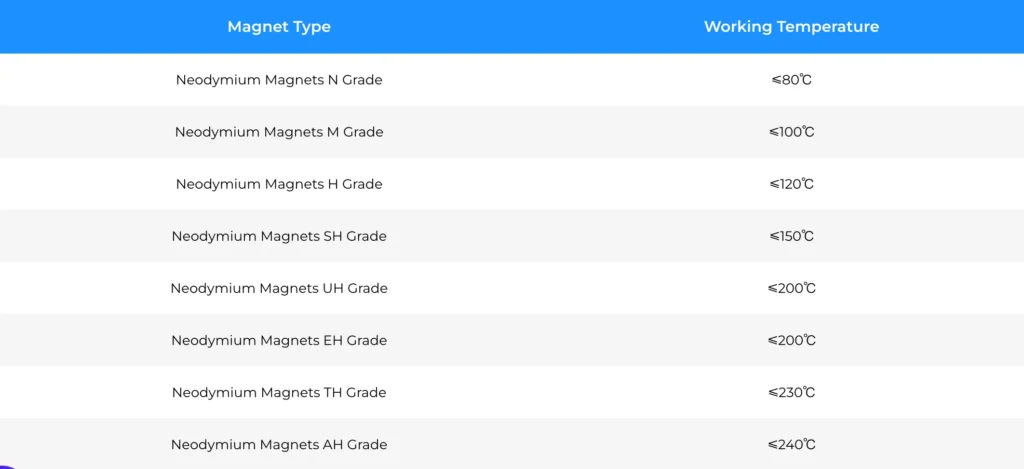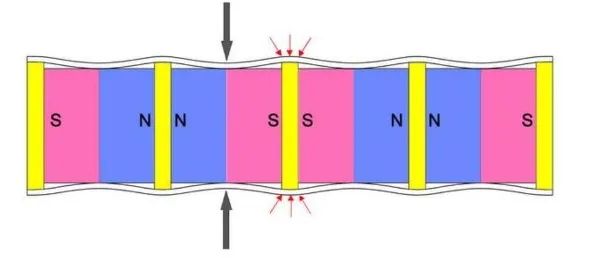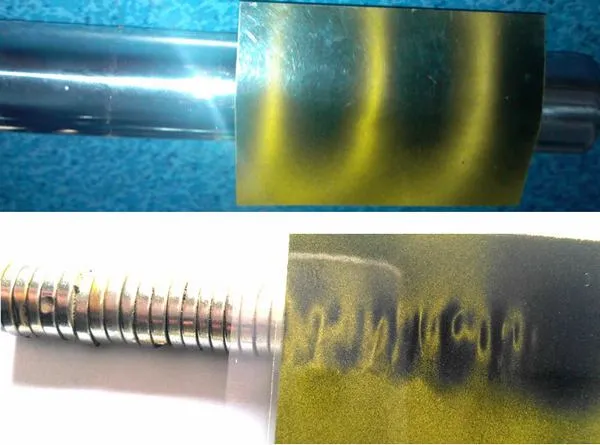Magnetic bars are essential tools used in industries to remove unwanted ferrous particles from products or materials. However, when shopping for magnetic bars, you may notice a significant difference in prices across different suppliers. Understanding why these price variations exist can help you make better purchasing decisions and ensure you’re getting the quality you need.
In this post, we’ll dive into the key factors that affect the cost of magnetic bars and highlight some of the practices that lower-cost suppliers use to cut corners—potentially at the expense of product performance.
The Structure of Tube Magnets
To fully understand the pricing and performance of tube magnets, it’s essential to first grasp their basic structure. A tube magnet consists of a stainless steel tube, magnetic conductive sheets, and several powerful magnets, typically neodymium (NdFeB) magnets. The ends of the tube are sealed with mounting plugs to form a complete unit.

Key Factors That Influence the Price of Magnetic Bars
The price of magnetic bars is heavily influenced by the cost of neodymium (NdFeB) magnets, which account for the largest portion of production expenses. A critical performance metric is the surface magnetic field strength—the stronger the magnetic field, the higher the price. In the case of neodymium magnets, which are used in our magnetic bars, three primary factors drive the cost:
1. Tube Magnet Size
The primary material in magnetic bars is rare-earth permanent magnets, specifically neodymium (NdFeB) magnets. As the size of the magnetic bar increases, more neodymium magnets are required to fill the bar, which directly increases the cost. Larger bars demand a greater quantity of these high-performance magnets, and this is the key factor driving up the price.
2. Bar Magnet Magnetic Strength (Gauss Rating)
Magnetic bars are typically rated by their Gauss level, which measures the strength of the magnetic field. Higher Gauss levels, such as 9,000, 12,000, or 16,000 Gauss, indicate stronger magnets. The stronger the magnet, the more expensive it is. This is especially true for neodymium magnets, which come in different grades like N35 to N54. As the grade increases, so does the magnet’s strength—and its price.
3. Temperature Resistance
Temperature has a significant impact on a magnet’s performance. If a magnet is exposed to temperatures higher than its rated maximum operating temperature, it will experience demagnetization, meaning a loss of magnetic strength. This can greatly reduce the effectiveness of the magnetic bar in removing impurities.
Different applications have varying temperature requirements. For most use cases, our magnetic bars are designed to operate at 80°C, which is sufficient for many environments. However, for applications with higher operating temperatures, we offer magnetic bars that can withstand more extreme conditions.
Neodymium magnets are available in temperature grades ranging from 80°C to 240°C (see table below for details). As the temperature resistance increases, so does the cost, because higher-grade materials are required.

Beware of Cost-Cutting Practices from Some Suppliers
While lower-priced magnetic bars might seem like a good deal, it’s essential to understand how some manufacturers cut corners to reduce costs—and the risks involved. Some suppliers use deceptive methods, such as incorporating lower-quality materials, to make their magnetic tubes appear to meet the necessary magnetic field strength. Although these products may seem adequate at first glance, they are often substandard. These cost-cutting techniques allow manufacturers to sell inferior products at higher prices, sacrificing quality and performance in the process.
1. Using 50% Steel Washers or Ferrite Magnets
A recurring issue faced by many customers is the use of many steel washers or ferrite magnets in place of high-performance neodymium (NdFeB) magnets. This practice drastically reduces the strength and effectiveness of magnetic bars, often leaving customers disappointed with their performance. One of our customers shared a bad experience with a previous supplier, where the magnetic bars they received were only 50% magnets and filled with 50% steel washers. This resulted in poor magnetic strength and unreliable impurity removal.
We’ve attached an image of their message to illustrate this problem more clearly:

At our company, we guarantee that our magnetic bars contain no steel washers or inferior ferrite magnets. We use 100% high-grade neodymium magnets, ensuring that your magnetic bars deliver the full magnetic strength required for your applications.
Disadvantages: Using steel washers or ferrite magnets compromises magnetic strength, leading to reduced performance and inefficiency in removing contaminants.
2. Reduce the Thickness of the Stainless Steel Tube
The thickness of the stainless-steel tube plays a critical role in both the magnetic performance and the durability of the magnetic bar. The closer the Gauss meter probe is to the magnet, the higher the magnetic value measured. Some suppliers use thinner steel tubes (as thin as 0.3mm) to reduce the grade of the magnet inside, yet still achieve the same surface Gauss reading. This can give the illusion of strong magnetic performance, even though the actual magnet is of lower quality.
From our experience, an optimal tube thickness of 0.5mm to 0.8mm strikes the right balance between magnetic strength and long-term durability. Thinner tubes, while they may initially offer high Gauss readings, are more prone to wear and tear due to constant friction with materials. Over time, this can lead to pipe damage, contamination of the materials, and eventual rusting of the magnet, resulting in the bar becoming unusable.
3. The Volume of Rare-Earth Magnets
When evaluating the magnetic performance of a tube magnet, the Gauss measurement is typically taken in the area of the magnetic pole, which shows the highest value. For this reason, reducing the diameter of the magnet inside the tube might not have a significant immediate effect on surface magnetism. However, using a smaller diameter magnet inside a thin-walled steel tube leaves the tube only partially filled.
Over time, this can lead to the tube wall becoming deformed, as the magnet does not provide adequate internal support. The stress becomes concentrated on the protruding parts of the tube, increasing the likelihood of the bar breaking. The uneven surface created by this design flaw also makes the magnetic bar more vulnerable to damage and reduces its overall durability.

4. Using Defective Magnets
Some manufacturers may use defective magnets with missing corners, chips, or knurls to reduce costs. While these magnets are significantly cheaper, their flaws are hidden once they are sealed inside the magnetic rods. As a result, it’s nearly impossible to detect these defects through visual inspection or other standard methods.
Magnets with these defects produce an uneven magnetic field, leading to poor iron removal efficiency. In other words, the overall performance of the magnetic bar is compromised, even if it looks fine from the outside.
5. Using Second-Class Magnets
Second-class magnets are those deemed unqualified by top manufacturers for various reasons, such as defects in size or magnetic consistency. While these magnets may still function in basic magnetic filtration applications, they are often sold at lower prices and used by some manufacturers to produce low-quality tube filter magnets.
These second-class magnets, commonly available as round slices, do not offer the same level of performance as top-grade magnets. When inspected with a magnetic pole observation film, high-quality magnets show large and uniform magnetic pole distribution. In contrast, magnets made from second-class products display uneven and disorganized magnetic pole patterns, leading to inconsistent magnetic fields.

(Uniform Magnetic Pole Distribution VS. Uneven And Disorganized Magnetic Pole Patterns)Photo Credit: Leyuan GroupConclusion
At our company, we focus on delivering high-quality magnetic bars that provide superior performance and durability. We understand the need for reliable equipment in your operations, which is why our magnetic bars are designed to consistently meet your expectations. By choosing us as your supplier, you’re investing in a product that not only boosts efficiency but also offers long-term value for your business.
